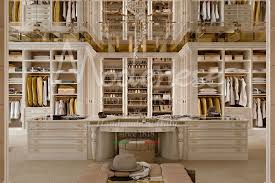In 2021, the UAE became the first country in the Middle East to commit to a national Net Zero emissions target. Dubai followed with its own Net Zero 2050 Strategy, pledging to achieve carbon neutrality by mid-century through a combination of green energy, sustainable construction, and regulatory reform.
While the headlines focus on energy and transport, real estate is quietly becoming one of the biggest focus areas in the city’s carbon-neutral ambitions. From how buildings are designed to what investors are willing to fund, the property sector in Dubai is already being reshaped.
This blog takes a detailed look at how Dubai’s Net Zero 2050 plan is impacting real estate, what developers are doing to adapt, and how buyers, tenants, and investors will be affected.
What Is the Net Zero 2050 Strategy?
Dubai’s Net Zero 2050 Strategy is a city-wide roadmap aimed at reducing greenhouse gas emissions across all sectors. It includes goals such as:
- 100 percent clean energy generation by 2050
- All new buildings to meet green building codes
- Retrofitting 30,000 existing buildings for energy efficiency
- Large-scale solar power infrastructure
- Smart city planning and sustainable mobility systems
Buildings currently account for around 30 to 40 percent of total emissions in urban environments. This puts the real estate sector at the heart of the net zero challenge.
How Net Zero Is Changing Real Estate Development
The impact of the 2050 target is already visible in the way new projects are being designed, approved, and marketed.
| Area of Impact | Pre–Net Zero (Before 2021) | Current Trends (2025) |
|---|---|---|
| Building Codes | Optional green certification | Mandatory green building compliance |
| Energy Systems | Traditional AC and lighting | Solar panels, smart HVAC, LED systems |
| Materials | Cost-focused sourcing | Low-carbon concrete, recycled materials |
| Water Efficiency | Standard fittings | Greywater recycling, low-flow fixtures |
| Developer Pitch | Location and size | Energy savings and environmental impact |
Green Building Regulations in Dubai
Dubai Municipality has implemented a Green Building Regulations and Specifications manual that outlines sustainability benchmarks for:
- Energy and water usage
- Indoor air quality
- Building orientation and envelope design
- Waste management during construction
- Use of non-toxic and regionally sourced materials
Compliance is now required for all new government and private sector buildings over a certain size.
The Rise of Eco-Conscious Developments
Several high-profile projects are already aligning themselves with net zero goals. Some of the notable ones include:
The Sustainable City (Dubailand)
One of the first communities in the region to be fully solar-powered, with car-free zones, urban farms, and greywater recycling.
Masdar City (Abu Dhabi)
While not in Dubai, it remains a blueprint for integrating clean energy, walkability, and passive cooling design in urban planning.
Expo City Dubai
Designed as a legacy of Expo 2020, it operates on clean energy and includes carbon-neutral buildings with sustainability built into every layer.
Wasl Tower
Under development on Sheikh Zayed Road, this skyscraper includes vertical gardens, energy-efficient glazing, and a LEED Platinum target.
What This Means for Developers
Developers now face both opportunities and challenges as the market pivots toward sustainability.
Opportunities
- Access to green financing and lower interest rates for sustainable projects
- Higher buyer appeal for eco-conscious consumers
- Stronger long-term asset valuation
Challenges
- Higher upfront costs due to green technology and materials
- Need for specialised consultants and certification processes
- Stricter approval timelines under updated building codes
Many developers are now positioning sustainability as a core marketing message, not just a compliance issue. LEED, BREEAM, and Estidama certifications are becoming standard selling points for premium projects.
What This Means for Buyers and Investors
Sustainable properties are not just good for the environment. They are increasingly seen as better investments, especially in a city where utility costs, heat, and maintenance can be significant over time.
Why buyers are taking interest
- Lower utility bills from energy-efficient designs
- Better resale potential as regulations tighten
- Improved air quality and comfort from eco-conscious materials
Why investors are taking notice
- Institutional investors favour ESG-compliant assets
- Higher rental appeal for green-certified spaces
- Better long-term risk protection against regulatory penalties
Expected Trends by 2030
As Dubai moves closer to the 2050 target, several trends are likely to shape the next decade of real estate development.
| Trend | Likely Impact |
|---|---|
| Smart metering and energy dashboards | Standard in all new units |
| Solar integration on rooftops | Mandatory in villa and townhouse communities |
| Public EV charging infrastructure | Required in all new apartment blocks |
| Retrofitting of older towers | Value uplift for retrofitted properties |
| Climate resilience design | Flood, heat, and humidity planning built-in |
The Financial Side of Sustainability
The perception that green buildings cost more is evolving. While upfront costs are typically 5 to 10 percent higher, operational savings and higher asset value often offset this quickly.
Estimated savings for a green-certified apartment (1,000 sq. ft.)
| Category | Traditional Building | Green Building (Estimates) |
|---|---|---|
| Annual Energy Bill | AED 10,000 | AED 6,000 |
| Annual Water Bill | AED 2,000 | AED 1,200 |
| Maintenance & Repairs | AED 5,000 | AED 3,500 |
| Total Annual Savings | – | AED 6,300 |
Over a 10-year period, this adds up to substantial savings and improved livability.
Dubai’s Net Zero 2050 plan is more than an environmental commitment. It’s a strategic shift that is influencing how cities are built, how homes are valued, and how residents live. For real estate stakeholders, aligning with this vision is no longer optional.
Whether you are buying, selling, building, or investing, sustainability is no longer a niche concern. It is central to future value, regulatory approval, and quality of life in Dubai’s urban ecosystem.
In a city that has always led with ambition, the journey to net zero might just become one of its most transformative stories yet.

)
)
)
)




